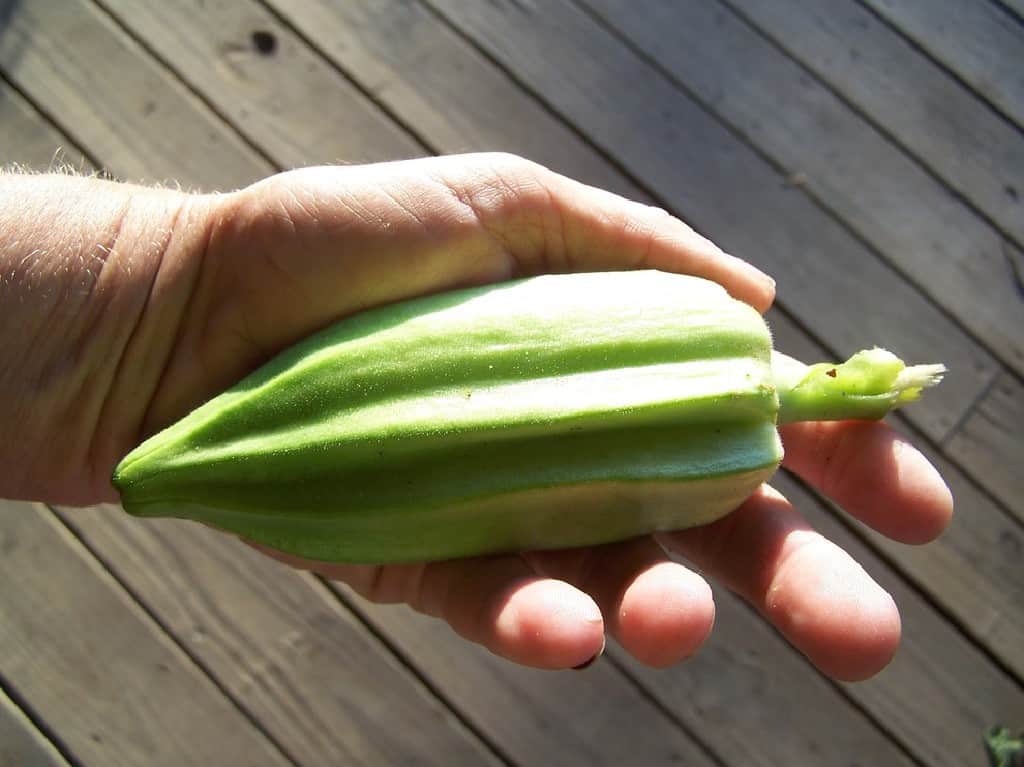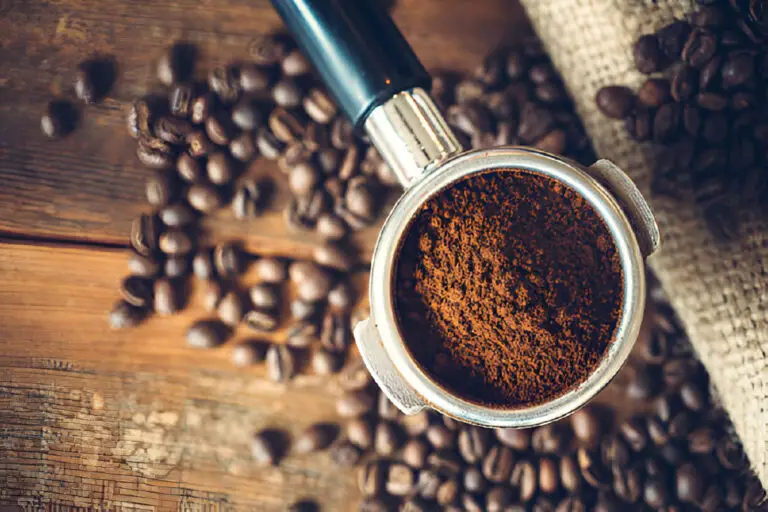What to Do With Large Overgrown Okra? Can You Still Eat Them?

Okra is a popular vegetable that can be cooked in many different dishes. However, if it isn’t harvested in time, okra can quickly become overgrown and hard to work with.
Are your okra plants producing more than you know what to do with? Don’t let those large, overgrown okra go to waste!
While you may think that it’s impossible to cook okra that has grown too big, there are actually many delicious ways to prepare these vegetables.
In this post, we’ll look at the best ways to cook large okra while keeping it tasty and enjoyable. From roasting to grilling to sautéing, there are plenty of options for turning those overgrown okras into a mouthwatering meal. So if you have a surplus of okra in your garden, keep reading to learn how to cook it to perfection.
How to Identify Large Overgrown Okra?
Okra, also known as lady’s fingers, is a popular vegetable often used in soups and stews. It is a member of the mallow family and is known for its distinctive seed pods that are long and narrow with a ridged texture.
Okra is ready to pick when the pods are between 3 and 4 inches long, delicate, and free of blemishes. However, if left to grow unchecked, okra can quickly become overgrown.
Overgrown okra can be identified by its size. Okra plants typically grow to be around 3-5 feet tall, but if allowed to grow unchecked, they can reach heights of up to 10 feet.
Overgrown okra plants will also have larger, thicker seed pods than those that are harvested at the right time. These pods will be tough and fibrous, making them inedible.
Another way to identify overgrown okra is by its color. Okra plants are typically green, but as they grow older, their color can change to yellow or brown. Overgrown okra plants will also have dry, brittle leaves that are likely to fall off easily.
INFO
If you have okra plants that are reaching heights of over 10 feet, have yellow or brown pods, or have dry, brittle leaves, it’s likely that they have grown too large to be edible.
Can You Still Eat Large Overgrown Okra?
Many people wonder if it’s still possible to eat large, overgrown okra. While it may be tempting to let these plants grow as big as possible in the hopes of getting a bigger harvest, it’s important to remember that overgrown okra can be tough and fibrous, making it inedible.
However, that doesn’t mean that all hope is lost for your overgrown okra plants. While the seed pods may be too tough to eat, you can still use the leaves and stems of the plant in your cooking.
These parts of the plant are often used in soups and stews, adding flavor and nutrition to your dishes.
Additionally, while the seed pods may be too tough to eat, you can still use them in other ways. For example, you can pickle the seed pods or use them as a decorative element in your garden.
What Are the Dangers of Eating Large Okra?
Consuming large okra can be risky for a few reasons. First, as okra plants grow larger, the seed pods become tough and fibrous, making them difficult to chew and swallow. This can cause choking, especially in young children or older adults.
Also, big okra plants may be more likely to have dangerous chemicals and pesticides on them. As the plants grow larger, they may be more susceptible to pests and diseases, which can lead to increased use of pesticides and other chemicals to keep them healthy. The plant can then take in these chemicals, which can be harmful to people if they eat too much.
Furthermore, large okra plants may also contain higher levels of naturally-occurring toxins. Okra plants contain small amounts of toxins called saponins, which are found in the leaves and stems of the plant. These toxins can be harmful if consumed in large amounts and may be more concentrated in overgrown okra plants.
Large Okra Cooking Techniques

Cooking large okra can be a bit of a challenge, as the seed pods can become tough and fibrous when allowed to grow too large. However, there are still several delicious ways to prepare large okra, so they are still enjoyable to eat.
1. Roast the okra.
To do this, slice the okra into 1-inch pieces and toss them in a mixture of olive oil, salt, and your favorite spices. Spread the okra out on a baking sheet and roast in the oven at 400 degrees Fahrenheit for 20–25 minutes, or until the okra is crispy and tender. This method helps reduce the fibrous texture of the okra and brings out its natural sweetness.
2. Grill the okra.
Another delicious way to cook large okra is to grill it. To do this, slice the okra into 1-inch pieces and toss them in a mixture of olive oil, salt, and your favorite spices. Grill the okra over medium-high heat for about 5-7 minutes, or until it is slightly charred and tender. This method gives the okra a smoky, flavorful taste that is perfect for a summer barbecue.
Large Okra Recipe Suggestions
When it comes to cooking with large okra, there are many delicious options to choose from.
- One tasty idea is to stew the okra with a flavorful tomato sauce.
- Simply cut the okra into 1-inch slices.
- Sauté them in a pan with some olive oil until they are lightly browned.
- Then, add in some chopped tomatoes, garlic, and herbs, such as oregano and basil.
- Cook the mixture until the okra is tender.
- Serve the stew over rice or pasta for a satisfying meal.
- Another idea is to pickle the okra to add a tangy crunch to salads and sandwiches.
- To make pickled okra, slice the okra into rounds and place them in a jar.
- In a small saucepan, heat equal parts vinegar and water with some sugar and salt until the sugar and salt dissolve.
- Pour the vinegar mixture over the okra in the jar, making sure the okra is completely covered.
- Let the okra pickle for at least a few hours before serving.
- Alternatively, try using large okra in a spicy gumbo.
- Cut the okra into 1-inch pieces and sauté them in a pot with some diced onions, bell peppers, and celery until the vegetables are tender.
- Then, add in some diced tomatoes, chicken broth, and Cajun spices, such as paprika, cayenne, and thyme.
- Give the gumbo 30 minutes or so to simmer.
- Then serve it over rice with some sliced andouille sausage on top.
- With these tasty large okra recipes, you can enjoy this nutritious vegetable in a variety of delicious ways.
Combining Large Okra with Other Ingredients
When it comes to cooking with large okra, one of the best ways to make the most of its texture and flavor is to combine it with other ingredients.
For example, try adding sliced okra to a hearty vegetable soup.
- In a pot, sauté some diced onions, carrots, and celery until they are tender.
- Then, add in sliced okra and continue cooking until the okra is lightly browned.
- Next, add in some vegetable broth, canned tomatoes, and herbs, such as thyme and parsley stems.
- Let the soup simmer for about 30 minutes.
- This hearty soup is a great way to enjoy the flavor and texture of large okra.
Another idea is to use large okra in a colorful stir-fry.
- Cut the okra into 1-inch pieces and stir-fry them in a pan with some oil until they are lightly browned.
- Then, add in some sliced bell peppers, broccoli, and onions.
- Continue stir-frying until the vegetables are tender.
- For added flavor, add in some soy sauce, garlic, and ginger, and serve the stir-fry over a bed of rice.
- The combination of tender okra and crunchy vegetables makes for a delicious and satisfying meal.
Finally, try using large okra in a flavorful curry.
- In a pot, heat some oil and sauté some diced onions, garlic, and ginger until they are fragrant.
- Then, add in sliced okra and cook until the okra is lightly browned.
- Next, stir in some curry powder, coconut milk, and diced tomatoes.
- Give the curry 30 minutes or so to simmer.
- Serve the curry over rice or with naan bread for a satisfying and flavorful meal.
- By combining large okra with other ingredients, you can create a variety of delicious dishes that showcase this versatile vegetable.
Conclusion
While large, overgrown okra may not be suitable for eating raw or cooked as a vegetable, there are still ways to use it in your cooking and gardening. By using the leaves and stems in soups and stews, or by pickling the seed pods, you can still get some use out of these overgrown plants.
While consuming small amounts of okra is generally safe, consuming large okra can be risky due to the potential presence of pesticides and other chemicals, as well as naturally-occurring toxins. If you want to avoid health problems, it’s best not to eat okra that has grown too big.






